11 SHADES OF ROSÉ….MUCH BETTER THAN 50 SHADES OF GREY
We opened ten bottles of rosé within 24 hours last week. Good friends David and Mark were visiting their old stomping grounds here in Portsmouth. Since we had enjoyed so many rosés while we were together in Provence in 2008, we made those pink wines, now very trendy, our theme for a tasting.
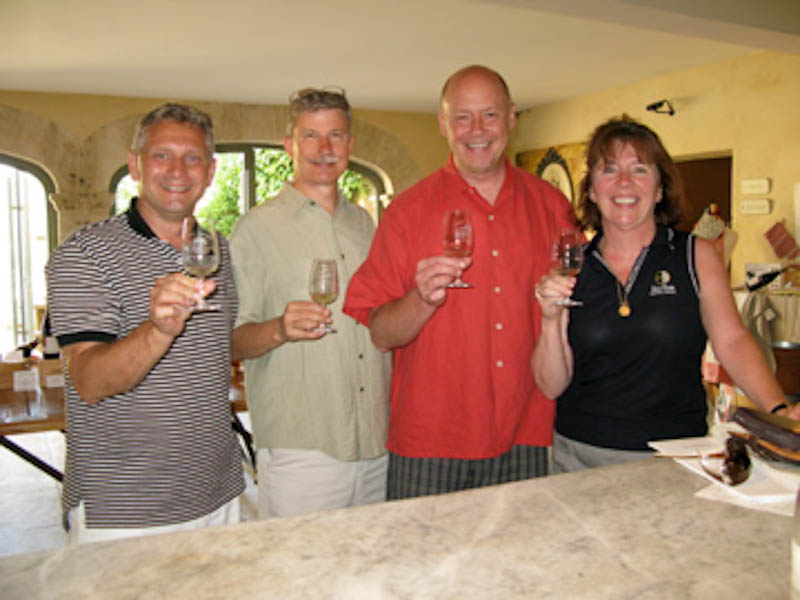
I’ve always been drawn to a good theme, a propensity that no doubt stems from growing up with my mother who had one for every rendezvous, be it birthdays—Huckleberry Hound, Raggedy Ann, The Munsters, Pink Elephants from Loch’s Bakery—or dinner parties—Mexican, seafood, San Diego Chargers. If my mother couldn’t get every aspect of the theme to fall in line, she would apologize as if the event was hopelessly inadequate.
In the case of wine tastings, themes are easy to come by, fun, and usually the most instructive approach to tasting wine. For example, do you like Pinot Noir? How about tasting Pinot Noirs from around the world? The same grape in different terroirs? You may be familiar with Pinots from California and Oregon, but how about comparing those wines with some from the Burgundy region of France—where some of the finest red wines in the world are made from Pinot Noir grapes? Add a bottle from New Zealand and that is a terrific wine tasting!
Rosé is made from red grapes. Which red grapes depends on the region where it is produced, but commonly used grapes are Grenache, Syrah, Cinsault, Mourvèdre, Tempranillo, and Pinot Noir. Cabernet Sauvignon and Zinfandel are also used. Several other grapes, in very small quantities, are often blended in, particularly in Provence. Aside from Provence, rosé is produced in Spain, Portugal, Argentina, South Africa, and in the United States, most notably Oregon and California. In a tasting, depending on how it is set up, one may hone in on a comparison of grapes, châteaux, regions, and vintages. These pink wines are a terrific theme!
Warm summers call out for rosé wines in our house and apparently in more and more households around the world—the demand for rosé wine has soared in recent years. Provence, where rosé is enjoyed year-round, is the largest producer of rosé and has long been the standard-bearer of dry rosé. Exports from that region to the U.S. alone grew 62% in 2011. It seems the U.S., where sweet White Zinfandels long dominated this niche thereby scaring away any sophisticated palates, has finally seen the light…and it is pink: retail sales of imported rosé jumped 26% last year.
To whet our taste buds for the following evening of our tasting of rosés, we opened two of our favorite rosés produced in the Luberon: Gargas’ Cave Aureto (Indication Géographique Protégée, Vaucluse), a rosé and a whole winery about which I will be writing more soon and Lourmarin’s Chateau Constantin-Chevalier (Appellation d’Origine Controlée, Côtes Luberon, a rosé about which I have already raved.
The award-winning Aureto Tramontane (2010) rosé is one of our very favorites. Yes, my dear friend Pierre is the responsable des ventes aux particuliers at Aureto, meaning he is the person who manages the retail side of the winery’s cave, but beyond that connection, their rosé is incredibly appealing.
As faithful readers will recall, we really like the Pétale de Rosé produced by Chateau Constantin-Chevalier. It is a blend of Syrah and Grenache. Among its many pleasing attributes—please read our earlier post—it is “light but has identity,” as a friend of mine says.
We thoroughly enjoyed both wines. Accolades were bandied about the table. Interestingly, the alcohol content of both wines is relatively high, reflecting a growing trend among rosé producers to make a more potent wine: the Aureto rosé is 13.5% and the Constantin-Chevalier is 14%. Between the two, the Constantin-Chevalier is a better aperitif wine and the Aureto holds its own better with food.
So, based on an approach we had seen (and used) in Beaune, charming village renown for producing some of the world’s legendary white Burgundies, we created “wine rings” and later wrote a booklet that simplifies the tasting of wine. When tasting a lot of wines, it is a terrific way to record your thoughts about the wines—by the end, the beginning is much easier to remember and since the rings are wrapped around the stem of the glass, there is no chance of them blowing in the wind.
Tasting wines is personal. It is all about what appeals to you. It is a social experience because everyone experiences taste and smell differently and, even when you all agree that the wine is good, you may each describe it differently…and that is where the fun begins. I say “peach” and you say “banana.” Hmmm.
A blind tasting means that we do not know what we are tasting—wine bottles are placed in bags and identified by a number—which makes for even more fun. I love blind tastings—the discussions are lively and results can be very surprising!
For our wine tasting, each guest was asked to bring a bottle of rosé. We didn’t provide any other instruction (such as region, price, grape variety, or vintage). Upon arrival, we whisked the bottles away and into our wine cellar (read basement with wine racks) where we determined the order of presentation, bagged, numbered, and tied with a ribbon each of the bottles. I tried to order the wines from lightest to heaviest (as you would in any wine tasting) while also bearing in mind the grapes that were used (so that comparisons would be made between, say, 100% Tempranillo and 50% Tempranillo with 50% Grenache).
We began our tasting with two bottles (and a crudité with homemade curry mayonaise). Since some of us had never met and others had not seen each other in a long time, I thought that we could casually taste two bottles and still chat with one another. We started in our living room with a bottle of Château Puech-Haut (2010) from Coteaux de Languedoc and a bottle of King Estate Winery’s Acrobat (2011) from Western Oregon.
The French rosé was a very refreshing wine to start the tastings. “Grapefruit,” “Plum,” “Citrus,” “Lyrical,” and “Floral” were descriptions that poured forth. The Pinot was distinctly different and a real treat. “Berries” was the dominant response and more specifically “Cherries” and “Raspberries.” “Chocolate cherries” was another. The colors were strikingly different: the first wine being a beautiful coral color (in an elegant frosted bottle) and the second wine being a lovely wild salmon color. I would (and later did) buy these wines.
The third bottle, from Southern California’s Temecula Valley (not exactly on the radar for producing particularly good wines), was the surprise hit of the night: South Coast Winery Tempranillo Rosé (2010). I had just been to Temecula where my brother John and niece Annie and I had done a little tasting—we had a great time but struggled to find wines we really liked. I picked up the aforementioned rosé, not because I was such a huge fan of it but because I thought it would be an interesting point of comparison at around $14.00. It is slightly sweet and very fruity, moving in the direction of a Sauterne. At our tasting, everyone loved it, including me! It was probably a nice switch from the dryer rosés and I think it went exceptionally well with the curry hummus and the mushroom caps stuffed with chèvre.The fourth wine, a Spanish wine, was not surprisingly made with Tempranillo (50%) and Grenacha (50%). Called Cortijo III (2011). It elicited more descriptions of various berries—I would definitely agree—but also of rosés and grapefruit. I think that this wine was refreshing, particularly following the South Coast Winery single-varietal Tempranillo. It went very well with our (delicious) verrines of lobster, mango, avocado, and tarragon.
The fifth wine was a classic rosé from Tavel, an appellation that produces only rosé. Grenache dominates the blend of grapes that may also include Syrah, Cinsault, and Claret. This wine came from Chateau d’Aqueria, one of the oldest and largest estates in the area and well-known for their robust, spicy wines infused with berry, herbal flavors. This 2010 bottle was full of flavor—adjectives were flying around the room. “Zingy,” “Hearty,” “Strawberries, “Fresh cut grass” are among those I remember. The color is a lovely deep pink and the alcohol content is 14%. Tavels are heartier than those from further south in Provence. I more partial to those further south, but this was an outstanding Tavel and would make me seek out more!
A couple of post-tasting notes that I want to pass on.
We opened one more bottle, in the name of research of course, to prime the mood to write this post. It is a 2011 Château Saint-Pierre, Côtes de Provence Appellation. Located in the heart of the Var Department where many wonderful rosé wines are produced, this is a gem. I taste the most elegant creamsicle I’ve ever had. “Ethereal” is a word that others have used to describe this one. “Watermelon, strawberries, and vanilla bean” my husband says. It is an exceptionally pleasing rosé (and certainly contributed to producing the right mood to write this long piece!).
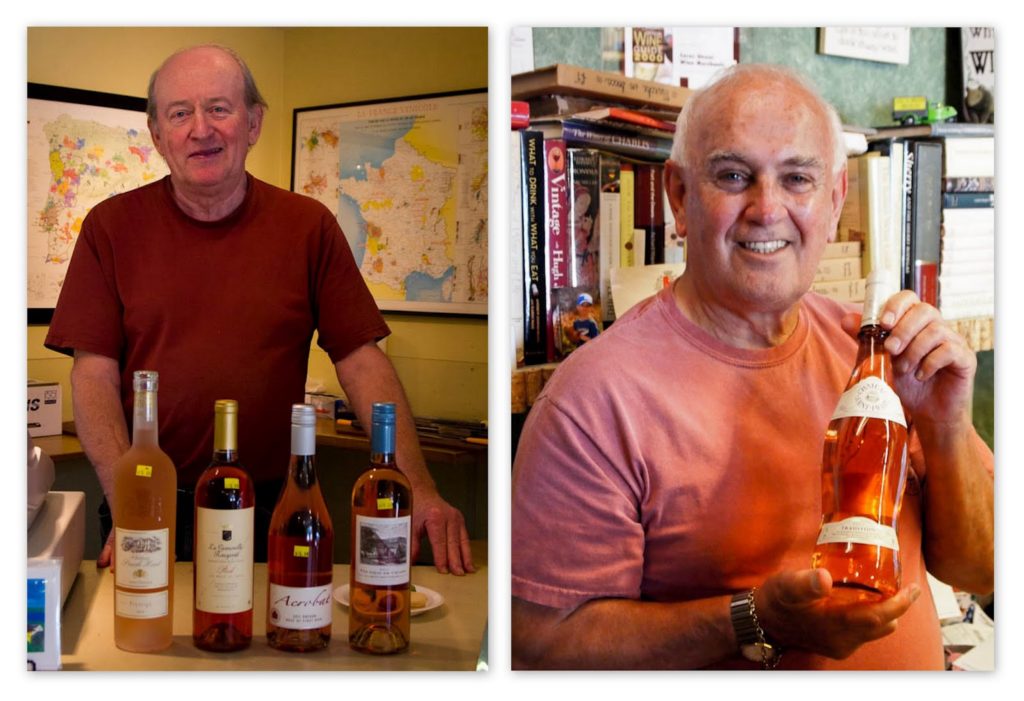
Our favorite Portsmouth wine merchants: Win Rhoades of South Street and Vine and David Campbell of Ceres Street Wine
Eight wines are a lot of wines to taste in a given setting. Make sure to have a spittoon (i.e., an attractive container for disposing of wine left in the glass or for spitting).We had some wine left over. Of course, we drank some the next day but we also marinated sliced peaches and pluots in the rosé with a little lemon rind and mint. We served it on a semolina cake the following day!
We will be travelling to Provence soon, to our beloved Lourmarin, where we will be tasting rosés from the Luberon and well beyond. We are huge fans of Bandol’s Domaine Ott and Chateau de Pibarnon rosés—who isn’t?—and might even dip down there. I don’t claim to be a well-educated wine-taster, but I can pass on what we like—so, I will take good tasting notes for future articles.
We have, for several years, considered taking groups of folks on rosé-tasting tours, punctuated by visits to markets, cooking classes, and peeks at whatever else is in season when we go…truffles, lavender, and concerts. Let us know what you think!

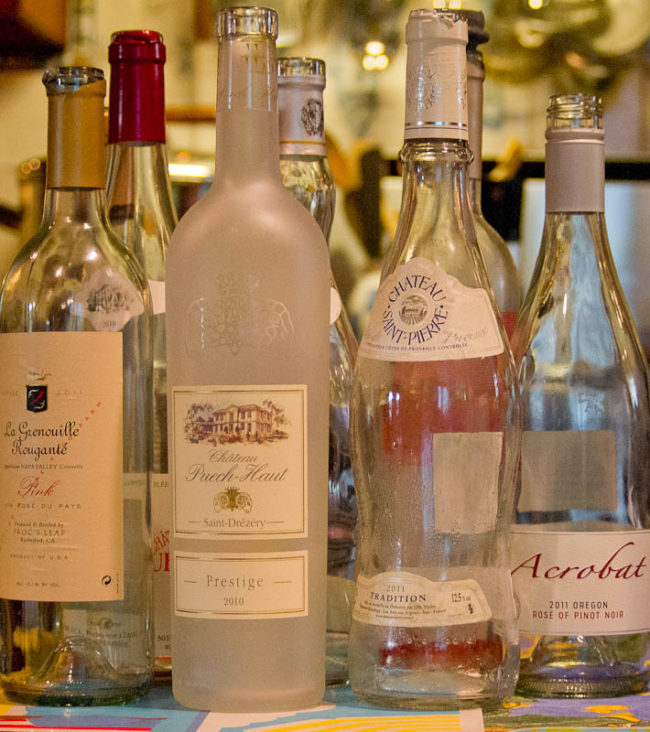
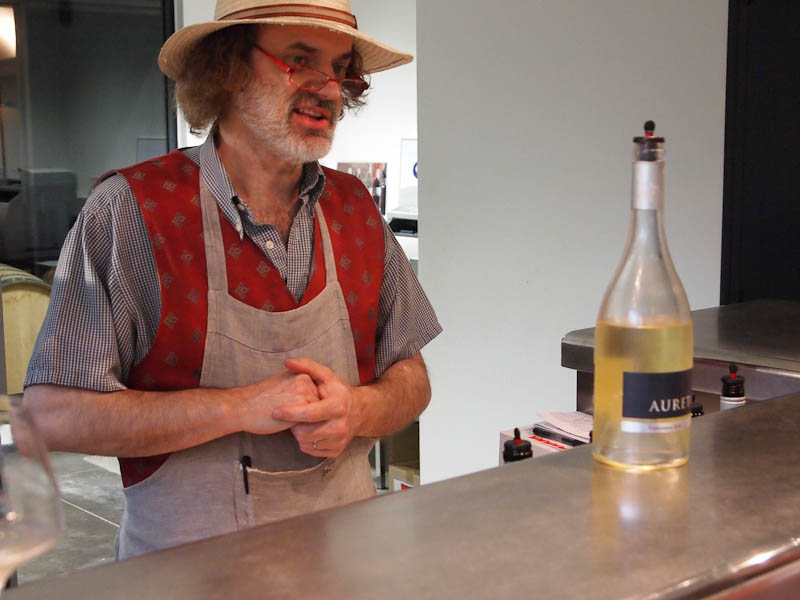
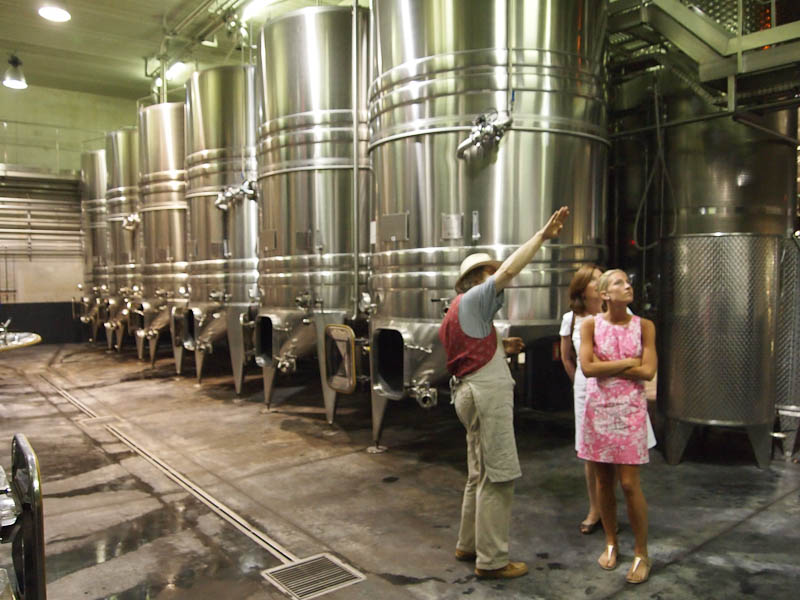
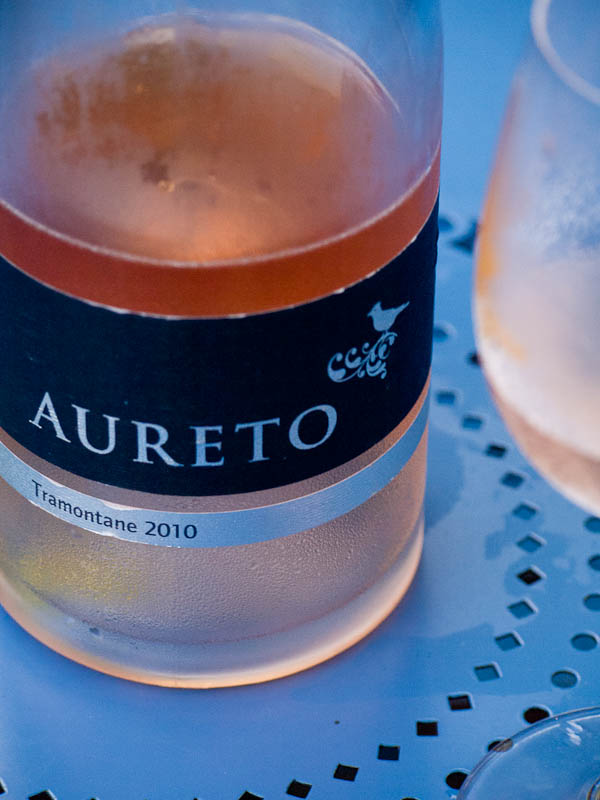
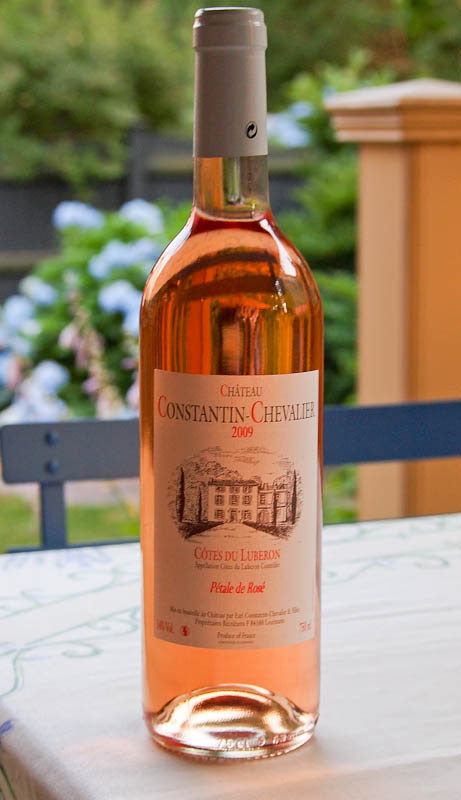
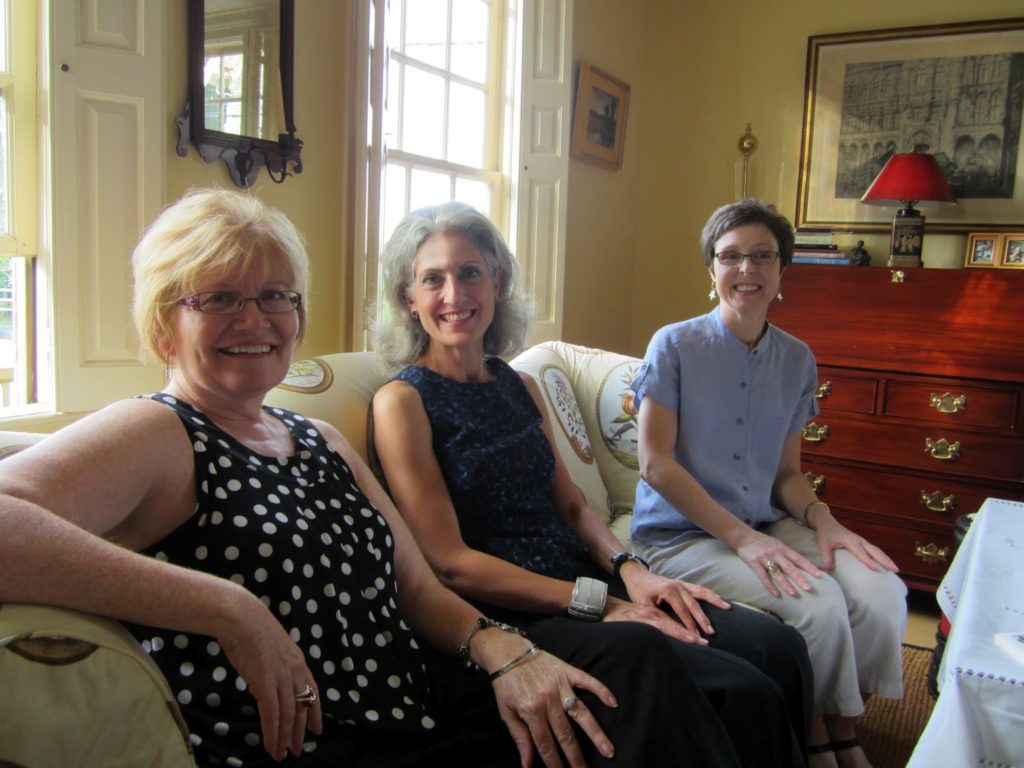
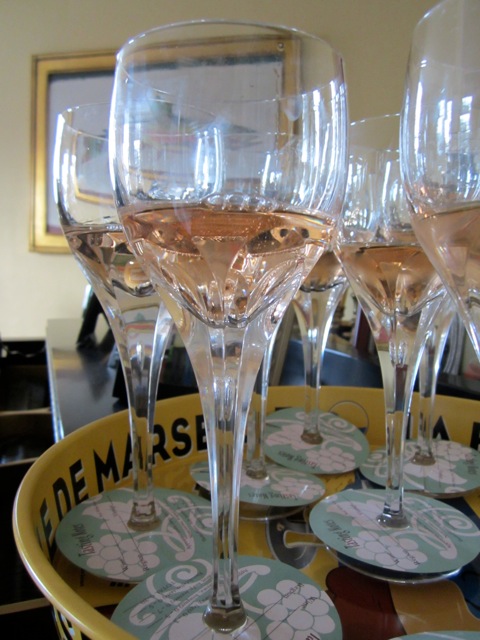
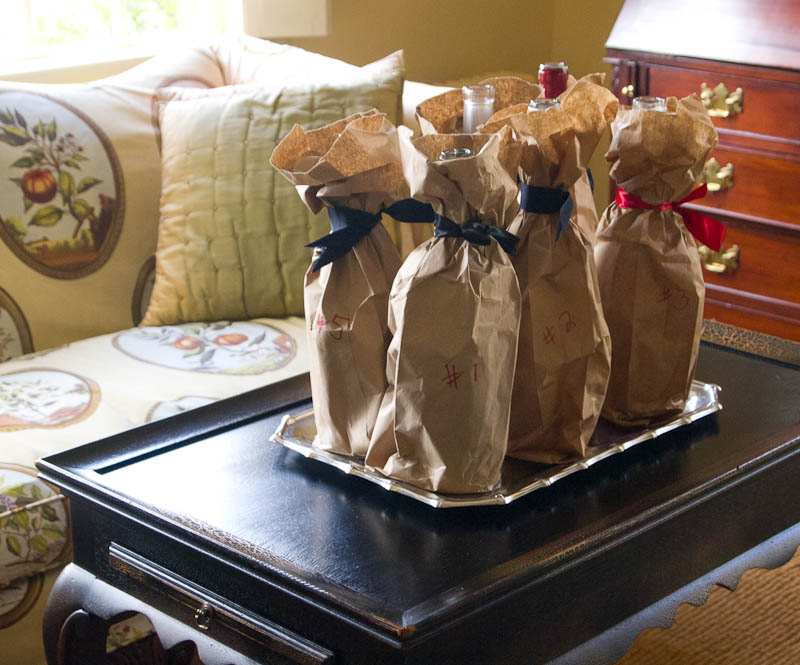
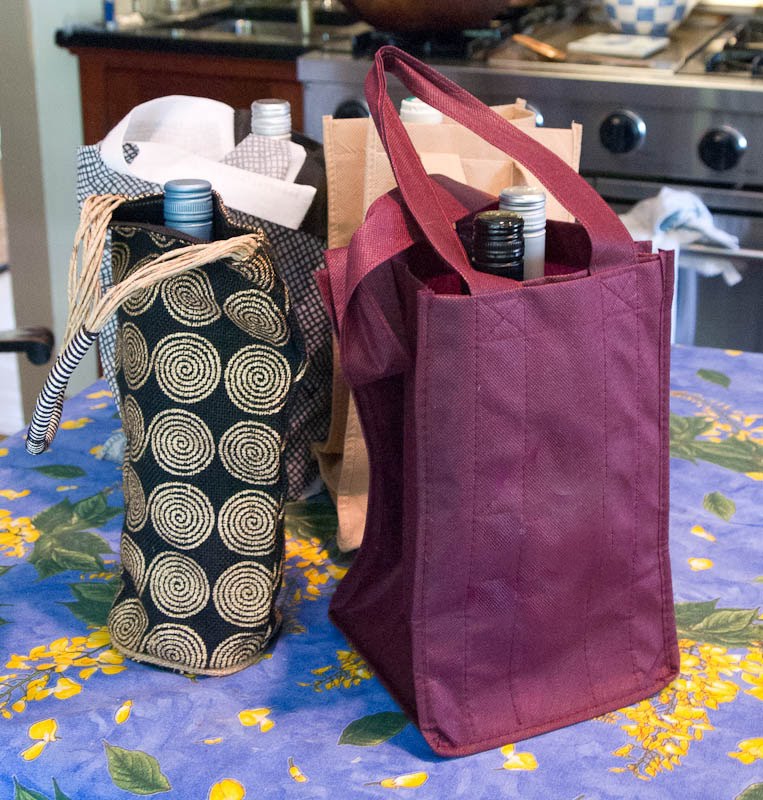
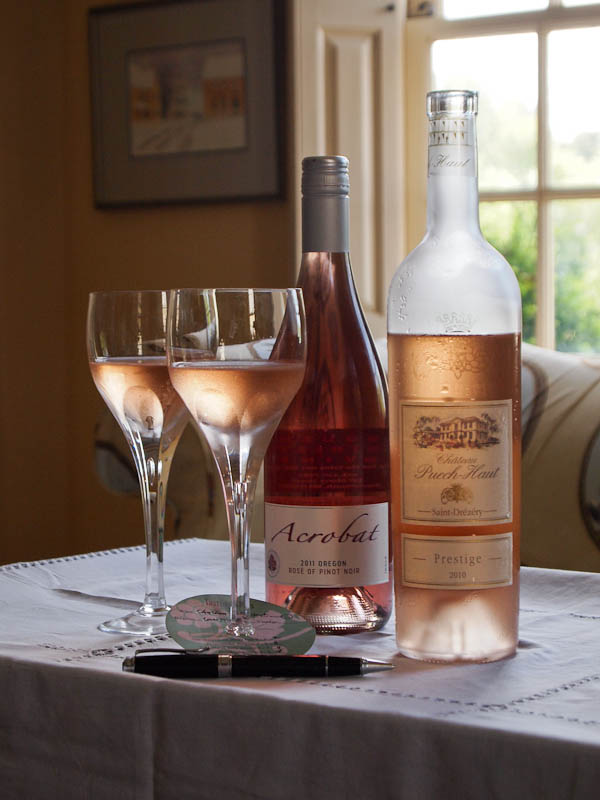
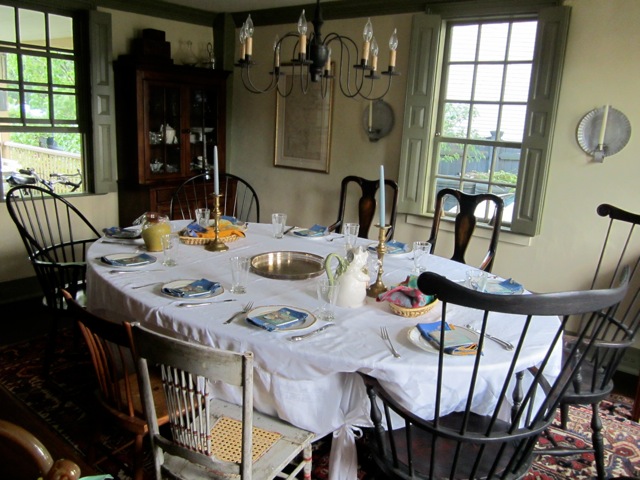
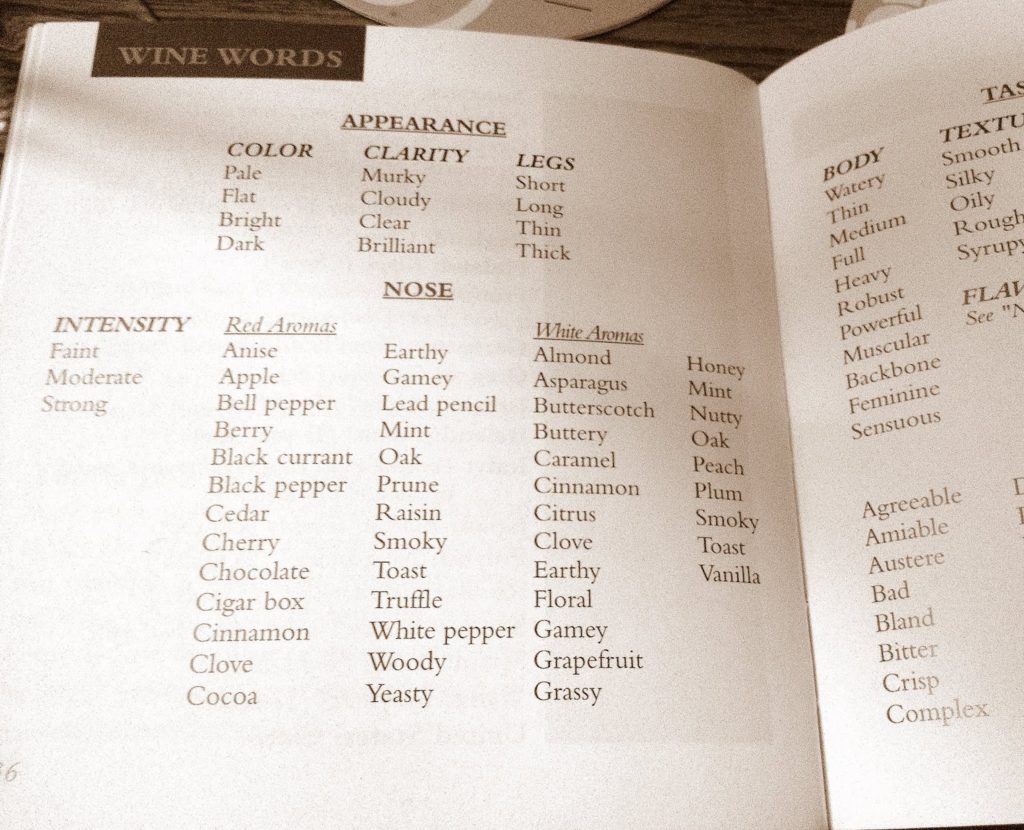
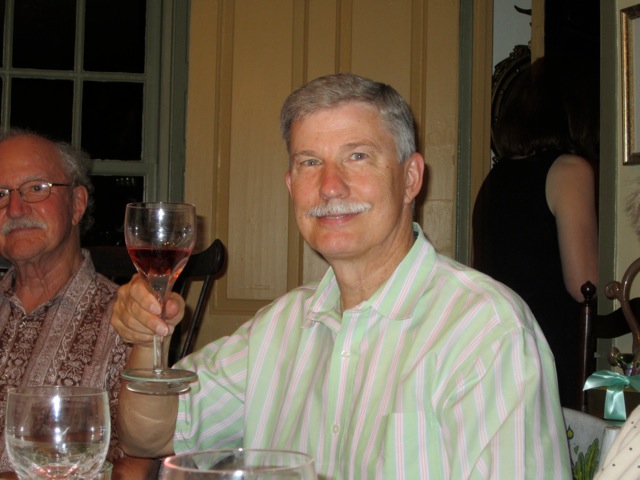
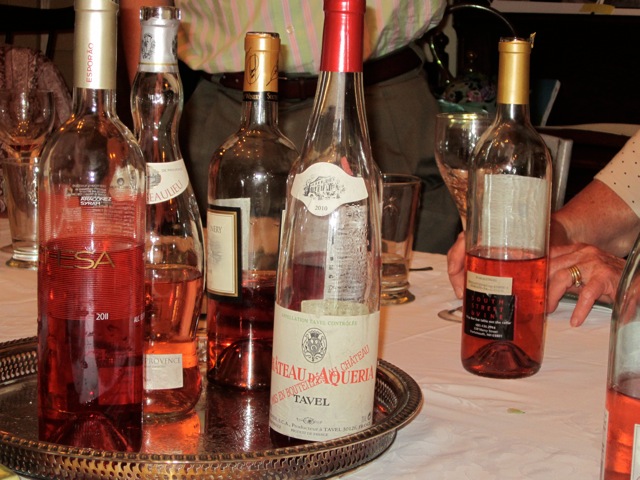

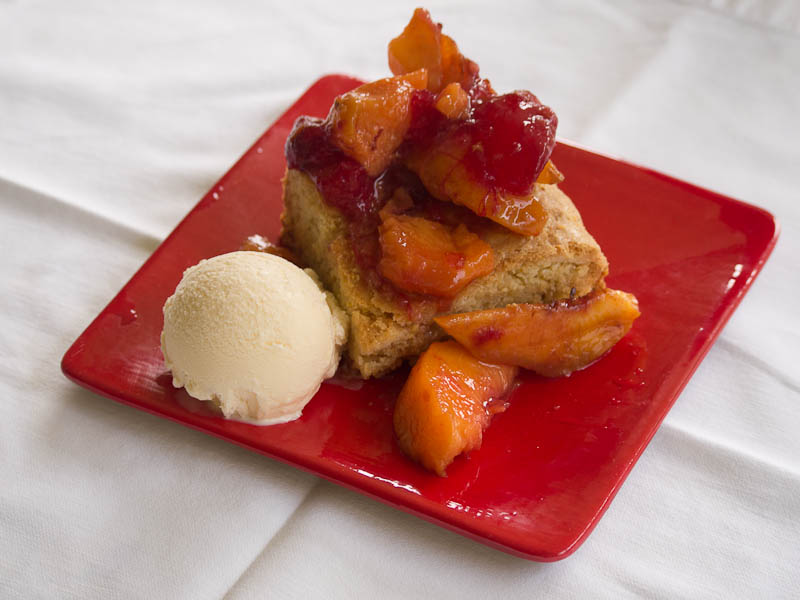
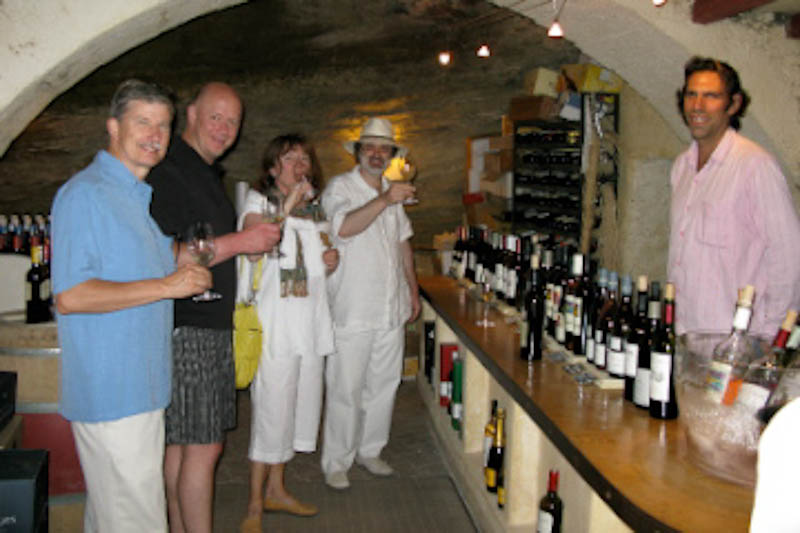
What an amazing and fun evening that was! And the evening before, as well, when we discussed the plan for the menu. The comment about “street lights in Paris on a foggy evening” made us want to watch Midnight in Paris when we returned. In fact, we have been on a French movie kick ever since. Thank you both for a truly memorable visit – we opened a rosé last evening and thought of you. ~ David
When I read your comment, I opened a rosé so that we could toast to you and the others who made the evening so fun! I think you and Mark should return soon for Round II!
What an amazing and fun evening that was! And the evening before, as well, when we discussed the plan for the menu. The comment about "street lights in Paris on a foggy evening" made us want to watch Midnight in Paris when we returned. In fact, we have been on a French movie kick ever since. Thank you both for a truly memorable visit – we opened a rosé last evening and thought of you. ~ David
Terrific post! Please let us know about your plans to take groups over to Provence!
Hi Ginny and Brian,
Please send me your email(s) so that we may keep you posted. We will be returning to Provence soon to begin to set up this venture! Thanks for your interest–it will be fun!
Terrific post! Please let us know about your plans to take groups over to Provence!
Rose Wine Tasting is certainly a lot more fun than 50 Shades of Grey !! At least you have two hands free to write down your responses.
Themes are always a pleasure to create. With Rose Wines, I can picture whimsicle Pink elephants with trunks curled around long stemmed Pink wine glasses toasting each other as petals from Pink roses float to the ground. A fitting tribute to a fine Rose wine.
Before you lock me up, thanks for the light entertainment and the much appreciated education on pink wines.
Do you think we could create a theme combing shades of pink AND shades of grey? hmmm….maybe not!
Rose Wine Tasting is certainly a lot more fun than 50 Shades of Grey !! At least you have two hands free to write down your responses.
Themes are always a pleasure to create. With Rose Wines, I can picture whimsicle Pink elephants with trunks curled around long stemmed Pink wine glasses toasting each other as petals from Pink roses float to the ground. A fitting tribute to a fine Rose wine.
Before you lock me up, thanks for the light entertainment and the much appreciated education on pink wines.
Thanks for this thorough and entertaining article on rosé wines! I am going to forward it to a friend who lives in Provence and took us wine tasting at the fabulous winery of Le Chêne Bleu. (More on that in my next La Dolce Vita California post.) You have covered lots of wonderful information to share!
Hi Kirsten,
We will look for Le Chêne Bleu wines, especially the viognier, when we are in Provence (soon!). And, to my readers, I recommend Kirsten’s blog, especially recent posts about Provence.
Thanks for this thorough and entertaining article on rosé wines! I am going to forward it to a friend who lives in Provence and took us wine tasting at the fabulous winery of Le Chêne Bleu. (More on that in my next La Dolce Vita California post.) You have covered lots of wonderful information to share!
Ok, Susan, I give up…my iPad and your blog don’t like eachother.
I loved this article….TOOD has chosen a couple of places to visit to taste roses…she, the beer drinker…
I too am headed to Provence…… And I am so pumped, as I thought I had “had” my “France trip” for this year in January…but as TOOD so charitably pointed out…I’m not getting any younger!
I have a domestic suggestion for you that is both fun and yummy…Charles and Charles Rose. If you buy a case of it (I did after tasting one bottle) there is, inside the case, a bumper sticker that reads “You CAN drink rose’ and still be a BAD ASS!” — you’ve gotta try it! I would say things
Ike cherry, watermelon, even maybe red raspberry… And give me some more! If you can find it and do taste it , let me know what you think?
When are you going to France?
OOXX,
Hi Lin,
I am working with our tech person regarding the iPad challenges. I think we have them resolved for our website, http://www.rentourhomeinprovence.com, but with the blog, it is a little more challenging!
Thanks for the recommendation–I will definitely look for that rose!
And, very glad to hear that you will be heading over to one of your (our) favorite areas of the world soon!
Ok, Susan, I give up…my iPad and your blog don't like eachother.
I loved this article….TOOD has chosen a couple of places to visit to taste roses…she, the beer drinker…
I too am headed to Provence…… And I am so pumped, as I thought I had "had" my "France trip" for this year in January…but as TOOD so charitably pointed out…I'm not getting any younger!
I have a domestic suggestion for you that is both fun and yummy…Charles and Charles Rose. If you buy a case of it (I did after tasting one bottle) there is, inside the case, a bumper sticker that reads "You CAN drink rose' and still be a BAD ASS!" — you've gotta try it! I would say things
Ike cherry, watermelon, even maybe red raspberry… And give me some more! If you can find it and do taste it , let me know what you think?
When are you going to France?
OOXX,
When I read your comment, I opened a rosé so that we could toast to you and the others who made the evening so fun! I think you and Mark should return soon for Round II!
Hi Ginny and Brian,
Please send me your email(s) so that we may keep you posted. We will be returning to Provence soon to begin to set up this venture! Thanks for your interest–it will be fun!
Do you think we could create a theme combing shades of pink AND shades of grey? hmmm….maybe not!
Hi Kirsten,
We will look for Le Chêne Bleu wines, especially the viognier, when we are in Provence (soon!). And, to my readers, I recommend Kirsten's blog, especially recent posts about Provence.
Hi Lin,
I am working with our tech person regarding the iPad challenges. I think we have them resolved for our website, http://www.rentourhomeinprovence.com, but with the blog, it is a little more challenging!
Thanks for the recommendation–I will definitely look for that rose!
And, very glad to hear that you will be heading over to one of your (our) favorite areas of the world soon!
Hi Susan and Towney,
I, too, am interested in your rozay wine tours. Please keep us posted.
Brian Taylor
Hi Susan and Towney,
I, too, am interested in your rozay wine tours. Please keep us posted.
Brian Taylor